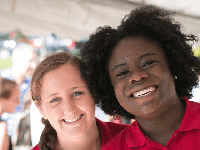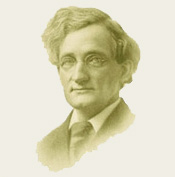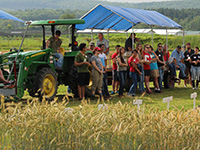Many successful community gardeners will say “gardening is the easy part;” it is the effective engagement and inclusion of community partners that can be easily overlooked. However, this is one of the most important pieces of any community project.
The following six videos were developed for the Seed to Supper project in New York State. However, they can be applied to any garden project that engages community. Each video has several corresponding reflective questions. The questions are designed to foster dialogue; feel free to focus on one, or all, or even come up with some of your own.
Introduction
Introduction Reflective Questions
- Why might it not be wise to ‘persuade’ people to garden?
- Bobby offers an example of working with aging gardeners. What are examples of other groups and the community specific needs they might have? How would you find out?
- How will you learn what roles community members will be interested in pursuing?
- Bobby acknowledges starting small. What are the most important pieces to put into place initially? What can wait till the program grows?
Chapter 1: Getting Started with Healthy “Soil”
Chapter #1 Reflective Questions
- Bobby talks about the healthy ‘soil’ that is more than gardening – that is community. Regarding Parker Palmer’s Habits of the Heart, when do you feel most aware of your interconnection to or interdependence with other people? When do you feel most disconnected?
- Reflect back on one of your first experiences when you realized that someone considered you to be “the other.” What was that like?
- Describe a time you experienced someone else as “other” in a way that was uncomfortable for you. What made it uncomfortable? What did you do in that situation? What did you decide or assume about yourself, others, or life in general (maybe subconsciously) from that experience?
- Describe a time you made a positive connection with someone you had previously experienced as “other?” What did you do in that situation? What allowed you to make that connection in that situation?
- Describe a time in your life when you spoke out—either in speech, writing, or action—and saw the power of your own agency. When have you witnessed it in others?
Chapter 2: Planning Your Garden with Community
Chapter #2 Reflective Questions
- Bobby talked about how everyone doesn’t learn the same way. Reflect on some different ways in which you and others you know learn. What works best for you and others? When do you, or others you know, turn off to learning, and what contributes to that?
- How might you come to know what foods are the ideal choices to raise in the garden in your community?
- Bobby highlights one way that a garden uses a bulletin board to post important plans, events, and so forth. What organizational approaches will you engage people in creating and using?
Chapter 3: Embedding the Garden into the Fabric of the Community
Chapter #3 Reflective Questions
- How will you “seed” your approach, what overarching themes will this garden rest on, such as a healing place, as Lucienne addresses?
- How as a facilitator can you “seed” your approach with the power of diversity? Who needs to be invited to the table?
- How can you foster a strong sense of belonging in the project?
- How can you cultivate a space in which people are eager to learn from one another, including the voices of young people and the aging?
- Parker Palmer talks about the wisdom of holding tension in a healthy way. Describe a challenge that you see that seems to bring up a lot of tension for your or others in your community. What are some successful and healthy ways you’ve seen people deal with that tension? Without naming people or the specifics of any situation, what have you observed people doing that doesn’t seem to work as well?
Chapter 4: Caring for Your Garden and the Power of Food in Our Lives
Chapter #4 Reflective Questions
Bobby talks about the power of food in our lives – that people associate food with their lives. He names how this is embedded into the larger conversation about social justice and food justice, which isn’t only about access to food, but also include those foods that may be associated with a cultural preference.
- How might you learn about food needs and desires in your community?
- What are some ways of telling stories related to food that touch the hearts of people involved in Seed to Supper and illuminate the power of food in our lives?
- How does your community view the food that they both need and want?
Chapter 5: Harvest, a Time for Celebration of the Fruits of Our Labor
Chapter #5 Reflective Questions
- Bobby names this as a time for celebration, truth telling and reflection. What went well, what went awry and what have we learned? Looking ahead, what specific steps will you engage in, to foster an atmosphere for safe truth telling?
- Bobby said that you may have come in “as a stranger….even as an imposter.” What is your response to this?
- What is a plan for connecting the growth of the garden to the growth of the community? What telling things might you look for?









